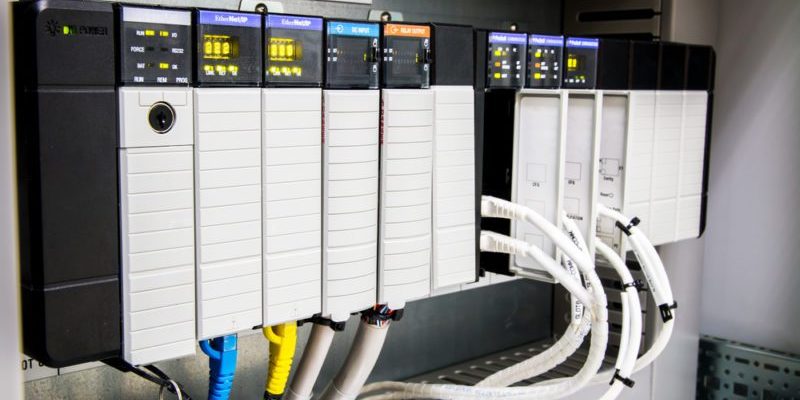Is it time to upgrade your outdated programmable logic controller (PLC)? Your current control system may have served you well for years, but replacing your old PLC before it breaks is among the wisest business decisions you can make.
PLC migrations come with several unique challenges. The new PLCs, for example, lack 1:1 ports which can lead to performance issues down the line. While basic PLC migrations can save you money in the short term, the challenges and risks associated with the process may not be worth your while.
Discover the benefits after a PLC upgrade
A PLC upgrade gives you access to the latest software and infrastructure. And it’s almost assured to exceed the existing functionality of your older control system. When you upgrade a PLC instead of migrating an old one, maintenance is simplified, and you’ll quickly realize several efficiency gains.
If you’re still debating whether or not you should migrate or upgrade, the team at EZSoft has put together a list of four quick improvements you’ll realize after upgrading to a new control system. These low-cost options will help you maximize uptime and keep the risks associated with replacing an older PLC low.
Of course, whenever you engage in the PLC upgrade process, you should always be concerned about capturing a fast return on your investment. The best path to achieving this is by assuming an even approach, taking the process on in stages whenever possible. Without further ado, here are the four main improvements an upgraded PLC will bring to your manufacturing plant:
1. The latest PLC logic
Upgrading your PLC lets you do away with old relays and timers that either aren’t supported by the manufacturer anymore or are prone to failure. While electromechanical relays represent some of the earliest building blocks of industrial automated technology, older relay systems aren’t as flexible as new solutions. If you need to make changes, expect to rewire the system substantially and add new timers and additional hardware. This process gets expensive because it requires specialized expertise and prolonged labor to pull it off.
Mechanical relays also open and close, causing the contacts to arch. Over time, this particular action destroys the relay, and you’re looking at costly repairs or a full replacement of the control system. When an older PLC like this breaks, an electrician can spend more time troubleshooting the problem than fixing it. Many service providers may reject the service request outright, and you could find yourself scrambling and asking, “How can I find industrial automation companies near me?” The good news is, after upgrading, you’ll ultimately replace these old relay systems that run on solid state relays (SSRs) and deploy the most recent PLC logic.
SSRs perform just as well as the older systems, if not substantially better, and they’re the more reliable, flexible solution. To build an additional automation point into your production line, you simply alter the relay time and write a small portion of new code. Engineers can identify problems easier on upgraded control systems that support the most recent logic. Mechanical relays have always been difficult to maintain, but upgraded PLCs enable improved diagnostics to identify failure points more quickly. Older relays aren’t smart, so figuring out what’s wrong with the PLC entails a lot of guesswork.
2. Collaborative intelligence
Perhaps the most dependable way to find a quick return on your investment after a PLC upgrade is through the integration of automated solutions that handle the most repetitive tasks at your processing facility. An upgrade PLC can leverage the latest innovations in AI to automate your plant through collaborative machine learning. Technologies like this improve safety by eliminating or reducing human involvement in mundane repetitive motion tasks in your manufacturing warehouse.
The newest PLCs support the latest technology that helps you maximize uptime while increasing accuracy and workplace safety. AI solutions may never replace the intelligence and instincts of a human operator, but they can complement them to boost the efficiency of your industrial operations by as much as 40%.
3. Enhanced product quality and accuracy
Quality control is a top priority in the process industries because poorly manufactured goods can have a devastating impact on your brand’s reputation. If your current manufacturing plant displays multiple production efficiencies and is prone to significant materials waste, this almost always contributes to product recalls and dissatisfied customers who either want to take the item back or won’t return to your brand at all.
The newest PLC can support cameras and various sensor types to concisely monitor intrinsic product qualities like color, shape, texture, and internal temperature. This helps you execute the most thorough quality assurance checks, virtually guaranteeing the same consistent product your customers expect every time.
3. Increased visualization and data storage
The capacity to electronically house your most valuable business data and do away with paper-based recording and documenting procedures is invaluable. New PLCs let you do things like automate timestamps at the start of a batch and provide easy access to historical records in case you need them during a regulatory audit.
Concerning visibility, an upgraded PLC improves equipment monitoring to reduce errors and simplify maintenance. An upgraded control system helps you collect valuable warehouse data and run complex analytics to make process improvements that are otherwise out of reach with your current PLC.
Upgrade your PLC without starting entirely from scratch
There are countless automation engineering companies out there that will pressure you into adopting a wholesale upgrade solution that reflects the latest PLC logic and emergent technologies. We at EZSoft understand this approach doesn’t always make sense. We’ll help you develop a moderate action plan that reduces risk while reinvigorating your processing facility and moving into a new era of industrial automation.
If it’s time to replace your outdated PLC, and you’re ready to take the next step, reach out to the automation experts at EZSoft by filling out an online request form now or calling us at (484) 568-5040.







